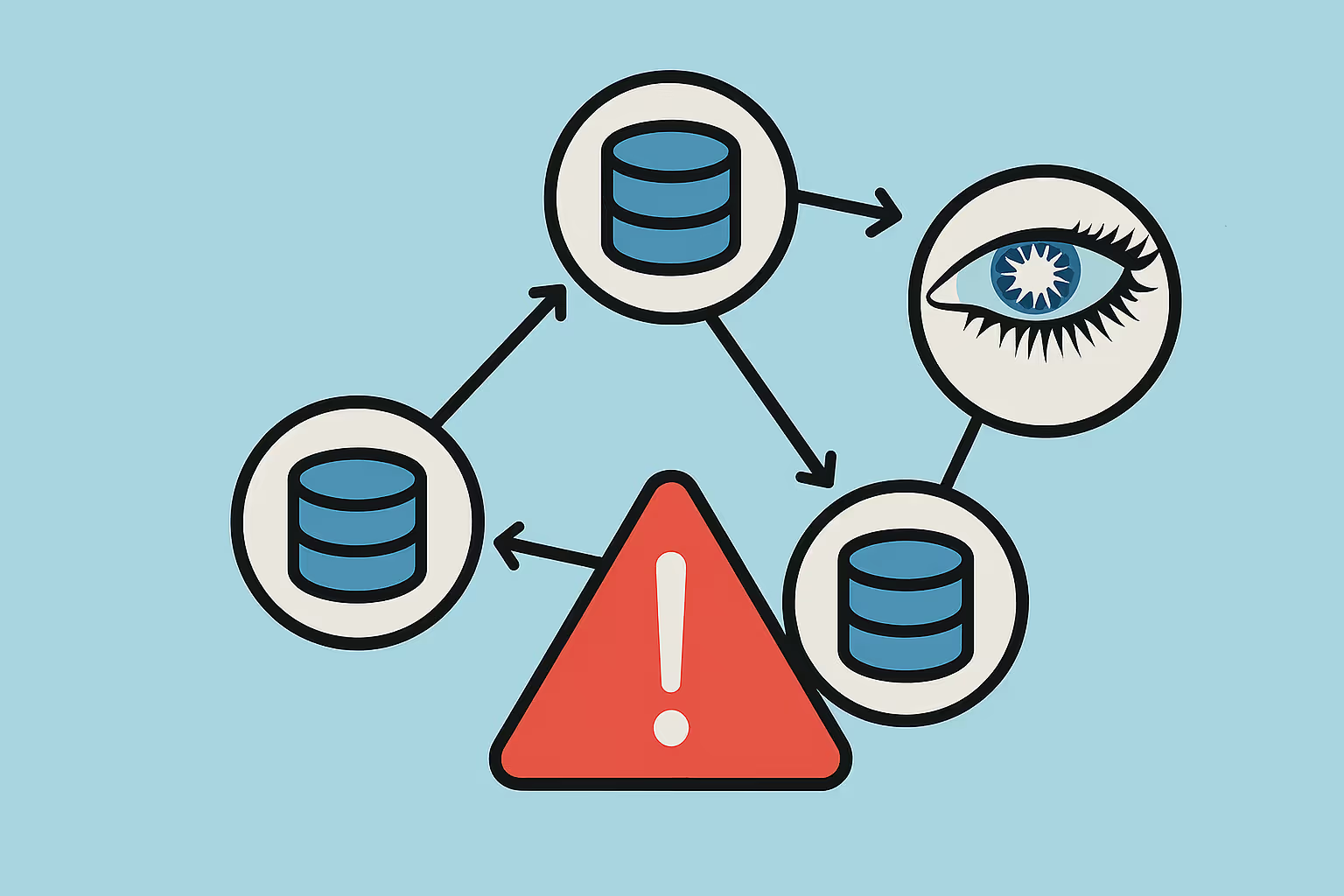Understanding phi_convict_threshold in Apache Cassandra: A Deep Dive into Failure Detection

Introduction
If you've ever dug through Cassandra's configuration files, you've likely encountered the mysterious phi_convict_threshold parameter.
This unique name and a vague description leaves many administrators wondering:
- What exactly is a "phi value"?
- Why is it set to 8?
- And when should you consider adjusting it?
The default cassandra.yaml configuration file offers only this cryptic explanation:
# phi value that must be reached for a host to be marked down.
# most users should never need to adjust this.
# phi_convict_threshold: 8
This blog post aims to demystify this critical configuration parameter.
Phi Accrual Failure Detector
The key to understanding phi_convict_threshold lies in Cassandra's FailureDetector.java implementation, which contains this revealing comment:
/**
* This FailureDetector is an implementation of the paper titled
* "The Phi Accrual Failure Detector" by Hayashibara.
* Check the paper and the IFailureDetector interface for details.
*/
The referenced paper, "The Phi Accrual Failure Detector" by Naohiro Hayashibara et al., introduces a novel approach to failure detection in distributed systems.
Unlike traditional binary failure detectors that classify nodes as either "alive" or "dead," the Phi Accrual Failure Detector provides a continuous suspicion level that represents the likelihood of a node having failed.
How Phi Values Work in Cassandra
The Mathematical Model
In Cassandra's implementation, the failure detection algorithm calculates whether a node should be considered "alive" or "dead" using the following formula:
phi_factor * phi > phi_convict_threshold == "dead"
phi_factor * phi < phi_convict_threshold == "alive"
Where:
- phi: Represents the time elapsed since the last successful heartbeat was received (in seconds)
- phi_factor: A scaling constant calculated as 1/log(10) ≈ 0.434
- phi_convict_threshold: The configurable threshold (default: 8)
Extract from the Cassandra source code confiming the above calculation.
// From FailureDetector.java
private static final double PHI_FACTOR = 1.0 / Math.log(10.0); // 0.434...
This factor scales the raw time value into a suspicion level that grows logarithmically rather than linearly, providing better sensitivity to network variations.
The Simple Version
When Cassandra monitors if nodes are alive, it doesn't just count seconds—it calculates "how weird is this delay?" using a logarithmic scale. Think of it like earthquake measurements: the difference between magnitude 2 and 3 is much bigger than the difference between 1 and 2.
Linear vs Logarithmic: A Practical Example
Imagine you're waiting for a friend who's always on time:
With Linear Thinking:
- 1 minute late = suspicion level 1
- 2 minutes late = suspicion level 2
- 10 minutes late = suspicion level 10
- 20 minutes late = suspicion level 20
Every minute adds the same amount of suspicion. But this doesn't match reality!
With Logarithmic Thinking (What Cassandra Does):
- 1 minute late = "Probably tying their shoes" (low suspicion)
- 2 minutes late = "Maybe stuck at a red light" (still low)
- 5 minutes late = "Hmm, something's up" (moderate suspicion)
- 10 minutes late = "Definitely having problems" (high suspicion)
- 20 minutes late = "They're not coming" (certain failure)
Real-World Examples
Let's walk through some practical scenarios to understand how this works:
Example 1: Normal Network Conditions
- Time since last heartbeat: 12 seconds
- Calculation: 0.434 * 12 = 5.208
- Result: 5.208 < 8 → Node is considered alive
Example 2: Network Degradation
- Time since last heartbeat: 20 seconds
- Calculation: 0.434 * 20 = 8.68
- Result: 8.68 > 8 → Node is marked as failed
The Default Threshold
With the default phi_convict_threshold of 8, nodes can stop responding for approximately 18.4 seconds before being marked as "dead" or down:
8 / 0.434 ≈ 18.43 seconds
Why This Matters: Impact on Cluster Operations
The phi_convict_threshold directly affects several critical aspects of Cassandra cluster behaviour:
Failure Detection Speed
A lower threshold means faster failure detection but increases the risk of false positives. A higher threshold reduces false positives but delays actual failure detection.
Gossip Protocol
Cassandra uses gossip to share cluster state information.
When a node is marked as failed based on the phi threshold, this information propagates through the cluster via gossip, affecting:
- Read and write routing decisions
- Hinted handoff activation
- Repair operations
Consistency and Availability Trade-offs
The threshold affects how quickly the cluster adapts to node failures, impacting:
- Query latency (waiting for unresponsive nodes vs. quick failover)
- Data consistency (premature failover might cause unnecessary data movements)
- Overall cluster stability
When to Adjust phi_convict_threshold
While the configuration file states "most users should never need to adjust this," there are specific scenarios where tuning might be beneficial:
Consider Increasing the Threshold (e.g., to 10-12) When:
- High Network Latency: Cloud deployments with variable network performance
- Cross-datacenter Deployments: WAN links with higher latency variance
- Virtualized Environments: Where "noisy neighbours" cause intermittent slowdowns
- Experiencing False Positives: Nodes frequently marked down but are actually healthy
Consider Decreasing the Threshold (e.g., to 5-6) When:
- Low-latency Networks: Dedicated hardware with predictable network performance
- Same-rack Deployments: Minimal network hops between nodes
- Strict SLA Requirements: Need faster failure detection for quick failover
- Stable Infrastructure: Highly controlled environment with minimal variance
Best Practices and Recommendations
- Monitor Before Adjusting: Use the Availability and connection statistics section in the AxonOps Overview Dashboard to understand your current failure detection patterns before making changes.
- Test in Non-Production: Always test threshold changes in a development or staging environment that mimics your production network characteristics.
- Gradual Adjustments: Make small incremental changes (± 1 or 2) rather than dramatic shifts like 5 or 10.
- Consider Network Topology: Multi-datacenter deployments might benefit from different thresholds per datacenter using cassandra-rackdc.properties configurations.
- Document Changes: Keep detailed records of why you adjusted the threshold and the observed impacts.
Monitoring and Troubleshooting
To effectively manage phi_convict_threshold, you can monitor your metrics in AxonOps Dashboards:
- Gossip State: Use nodetool gossipinfo to see current phi values.
- Availability and connection statistics: Track frequency of UP/DOWN state changes.
- Metrics: Monitor various metrics like Latency, Reads and Writes and other system metrics. All of these metrics can be found on your AxonOps dashboards.
- Application Metrics: Watch for correlation between node failures and application errors
Conclusion
The phi_convict_threshold parameter, while obscure, plays a crucial role in Cassandra's ability to maintain cluster stability and performance. By understanding the underlying Phi Accrual Failure Detector algorithm and how Cassandra implements it, you can make informed decisions about whether and how to adjust this parameter for your specific deployment.
Remember that the default value of 8 has been carefully chosen to work well for most deployments.
Only consider adjusting it after thorough analysis of your cluster's behaviour and network characteristics.
When in doubt, contact one of our experts at (http://Digitalis.io )[https://digitalis.io/contact-us] and we will be happy to help you analyse and implement the solution that best suites your cluster.
This blog post is based on analysis of Apache Cassandra's source code and the academic paper on Phi Accrual Failure Detection. Your specific deployment may require different considerations.

.png)
%20(1).png)

